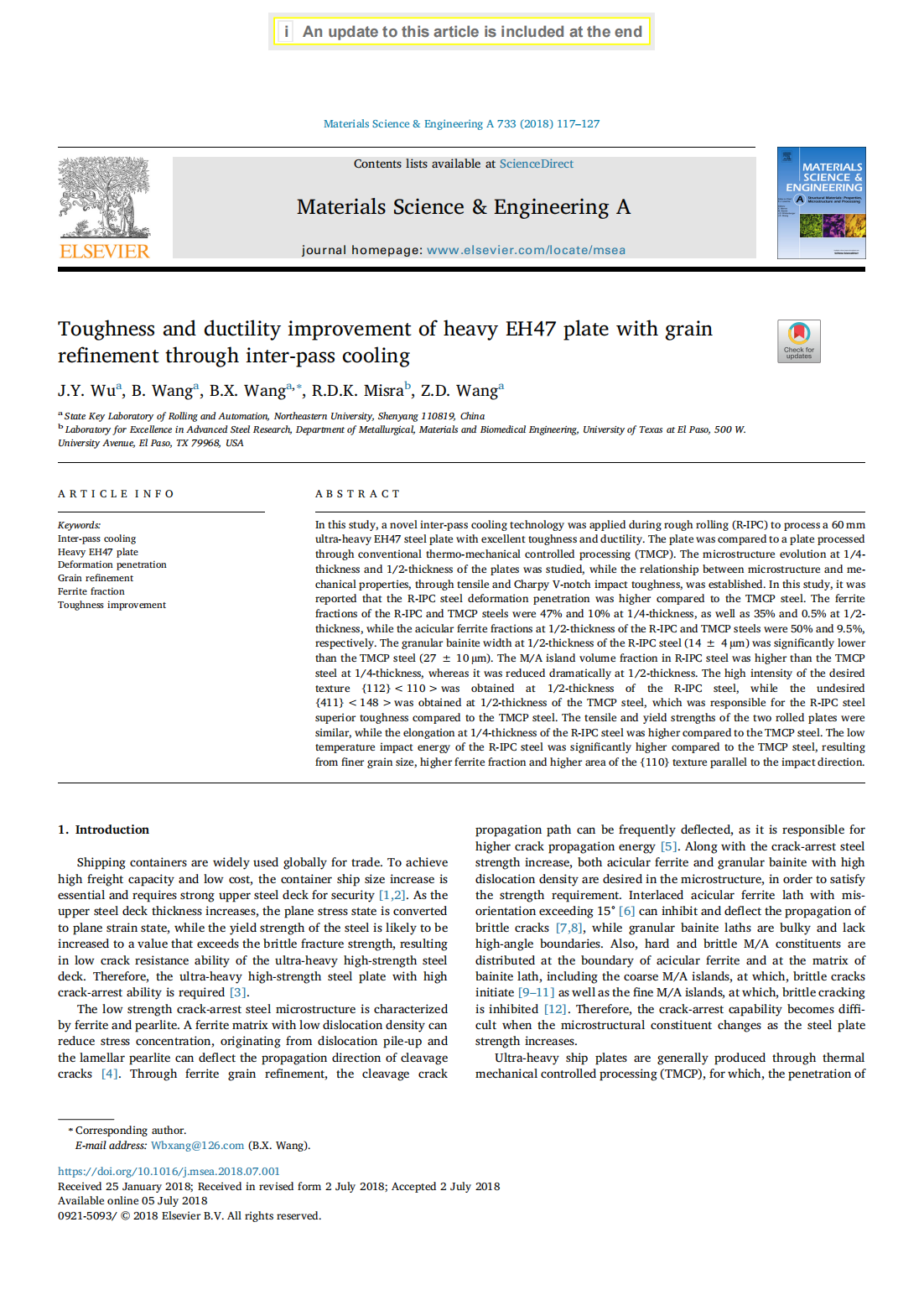In this study, a novel inter-pass cooling technology was applied during rough rolling (R-IPC) to process a 60 mm ultra-heavy EH47 steel plate with excellent toughness and ductility. The plate was compared to a plate processed through conventional thermo-mechanical controlled processing (TMCP). The microstructure evolution at 1/4- thickness and 1/2-thickness of the plates was studied, while the relationship between microstructure and mechanical properties, through tensile and Charpy V-notch impact toughness, was established. In this study, it was reported that the R-IPC steel deformation penetration was higher compared to the TMCP steel. The ferrite fractions of the R-IPC and TMCP steels were 47% and 10% at 1/4-thickness, as well as 35% and 0.5% at 1/2- thickness, while the acicular ferrite fractions at 1/2-thickness of the R-IPC and TMCP steels were 50% and 9.5%, respectively. The granular bainite width at 1/2-thickness of the R-IPC steel (14 ± 4 µm) was signifificantly lower than the TMCP steel (27 ± 10 µm). The M/A island volume fraction in R-IPC steel was higher than the TMCP steel at 1/4-thickness, whereas it was reduced dramatically at 1/2-thickness. The high intensity of the desired texture {112} < 110 > was obtained at 1/2-thickness of the R-IPC steel, while the undesired {411} < 148 > was obtained at 1/2-thickness of the TMCP steel, which was responsible for the R-IPC steel superior toughness compared to the TMCP steel. The tensile and yield strengths of the two rolled plates were similar, while the elongation at 1/4-thickness of the R-IPC steel was higher compared to the TMCP steel. The low temperature impact energy of the R-IPC steel was signifificantly higher compared to the TMCP steel, resulting from fifiner grain size, higher ferrite fraction and higher area of the {110} texture parallel to the impact direction.
